How community resistance saved Wendell’s Bear Mountain
|
Published: 01-09-2024 4:48 PM
Modified: 01-09-2024 7:40 PM |
When the Wendell Historical Society’s museum opens to the public, among the items on display will be a bear costume. The outfit signifies one small part of a much larger story of how community resistance saved Bear Mountain in Wendell.
The story began in 1983, when the state announced a proposed plan to reroute a section of Route 2, which went through Erving.
“The state of Massachusetts announced a plan to reroute a section of Route 2 (in Erving) due to the narrowness of that section of road. It was a very narrow stretch of road which went from four lanes down to two lanes, and the two lanes were very compact and narrow. The original proposed plan to resolve this was to build two bridges across the Millers River and to reroute the road through Bear Mountain in Wendell,” said Dan Keller, owner of GMP Films, who was also involved in the fight to save Bear Mountain.
The proposed plan was news to Wendell residents, who were never alerted of it prior to the announcement. The citizens found out about the proposal by then-Gov. Michael Dukakis when they came across the news about an upgrade to Route 2 through Bear Mountain, according to Wendell Historical Society President Ed Hines.
Wendell residents opposing the plan suggested keeping the revisions to Route 2 on the same side of the river, where it currently was.
“Keeping the rerouting on the same side of the river meant going through Erving Paper Mill property. Erving Paper Mill had a lot of clout,” Keller said. “Wendell was the exact opposite. We did not have a lot of clout, we did not have a lot of people. Even though we did not have a lot of clout or a lot of people, Wendell can get very agitated, especially for a hair-brained project.”
John Klondike Koehler, according to Hines, attended an event with Dukakis, speaking on behalf of the group of citizens who were against the proposed plan through Wendell. This group then began to strategize.
“It was a very complex battle that took a lot of time and energy from lots of people,” Hines said.
Article continues after...
Yesterday's Most Read Articles
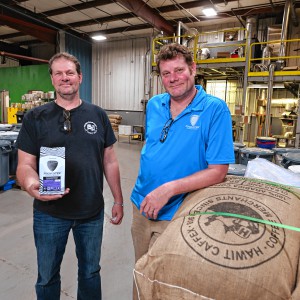 Fogbuster Coffee Works, formerly Pierce Brothers, celebrating 30 years in business
Fogbuster Coffee Works, formerly Pierce Brothers, celebrating 30 years in business
 Real Estate Transactions: May 3, 2024
Real Estate Transactions: May 3, 2024
 Greenfield homicide victim to be memorialized in Pittsfield
Greenfield homicide victim to be memorialized in Pittsfield
 Softball: Franklin Tech pulls away from Hopkins, 8-3 (PHOTOS)
Softball: Franklin Tech pulls away from Hopkins, 8-3 (PHOTOS)
 As I See It: Between Israel and Palestine: Which side should we be on, and why?
As I See It: Between Israel and Palestine: Which side should we be on, and why?
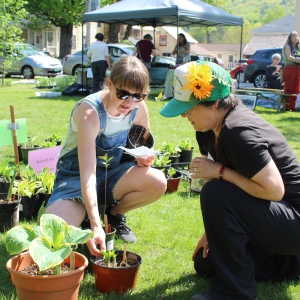 Bridge of Flowers in Shelburne Falls to open on plant sale day, May 11
Bridge of Flowers in Shelburne Falls to open on plant sale day, May 11
Among those citizens who became involved in the efforts were Anne Zak, Michael Idoine and Jonathan von Ranson, as well as many other citizens of town. The Wendell Full Moon Coffeehouse was also involved, as well as Mass Audubon and the Sierra Club.
“It was a Herculean effort on behalf of the citizens of Wendell from seeing the project through,” Hines said.
Along with the group working to protect Bear Mountain from the state’s proposed rerouting of the highway, an impromptu yet silent person wearing a bear costume began to appear whenever Dukakis held press events in western Massachusetts. Although the bear was ever silent, his message was made clear with a simple sign — Save Bear Mountain.
The idea for the bear came from Rosalie Rossier, who had a cousin who ran a motel in Maine that used a bear costume for publicity.
“It was decided to borrow the costume to protest the idea of Route 2 being redirected through Bear Mountain when Dukakis came through western Massachusetts,” explained Joshua “Waffles the Clown” Dostis, the first person to don the costume and make an appearance.
Dostis explained that although he was the first person to appear as the bear at protests, at one time or another, almost everyone in Wendell got to play the part.
“When Dukakis came to the area he was met by a man in a bear suit with a sign, which stated, ‘Upgrade Route 2, Save Bear Mountain.’ All the papers had photos of the bear,” Dostis explained.
The costume was eventually sent back to Rossier’s cousin in Maine, Dostis said, and Nancy Cole went on to make a second costume. The bear once again proceeded to follow Dukakis at his western Massachusetts appearances.
The bear also made an appearance at a Democratic State Convention being held in Springfield, Dostis said, adding that he was not in the costume at that event.
“Someone else went and snuck in the costume as they could not enter the convention in it. Once in the convention, the bear costume was put on and the bear carried a sign that said ‘Save Bear Mountain’ and gave out bear hugs,” Dostis said.
In the end, that section of Route 2 was not rerouted through Bear Mountain, but instead revised in its current location of Erving Center, as the citizens of Wendell had proposed.
“Because they did not cross the river, it meant they did not have to build two bridges across the river, which was a big project and would have been very expensive,” said Keller.
“We gave the state more options that made more sense,” Keller added. “The experts in the field then considered it and realized it made more sense. Historically, it shows that our proposal was the right decision. Their proposal would have clogged up a huge amount of land in a very precious part of the community. Bear Mountain would have ceased to exist as we know it today.”
“The battle to protect the land is still going on. It was a battle then and it is a battle that still continues,” Hines said. “Wendell is 75-80% open space — every so often you come across a position where you have to protect the land. Usually organizations with a lot of money and a lot of legal resources try to take advantage of a small town with not a lot of money and not a lot of legal resources. The bigger message behind the battle is how do small towns protect themselves against larger land developers and corporate interests.”
The second bear costume that became so well known throughout the fight will be on display when the Wendell Historical Society’s museum opens to the public. A video of a program on the “Battle for Bear Mountain,” which was held at the Wendell Free Library and filmed by Keller, can be viewed on the Wendell Historical Society’s YouTube page.
Carla Charter is a freelance writer from Phillipston. Her writing focuses on the history of the North Quabbin area. Contact her at cjfreelancewriter@earthlink.net.

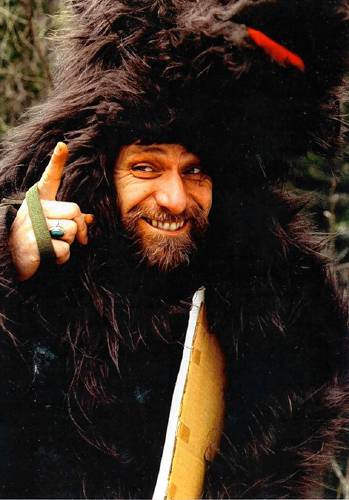
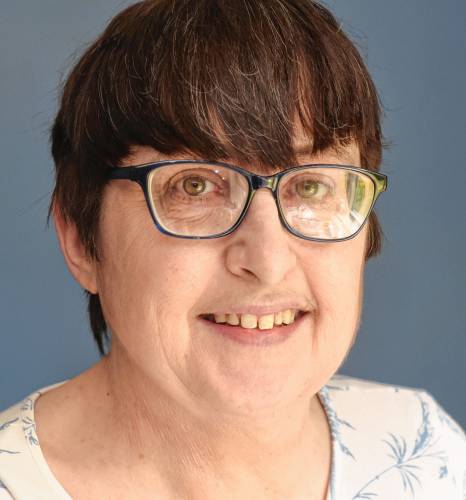
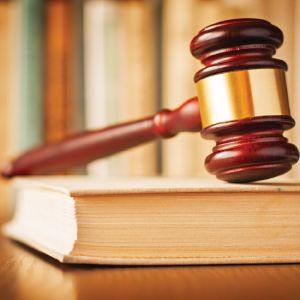 Community Legal Aid expands Disability Benefits Project to Franklin County
Community Legal Aid expands Disability Benefits Project to Franklin County Wear Orange organizers prepare display to remember gun violence victims
Wear Orange organizers prepare display to remember gun violence victims Deerfield candidates, Whately incumbent discuss issues with voters at South County Senior Center
Deerfield candidates, Whately incumbent discuss issues with voters at South County Senior Center
